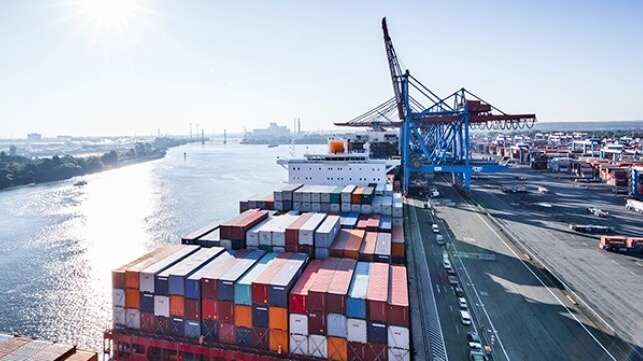European Port Operators Are Worried About Carbon Charges

With a month to go for inclusion of the maritime sector in the EU’s Emissions Trading Scheme (ETS), fears over the policy continue to mount. The Federation of European Private Port Operators (Feport) - a lobby group for terminal operators and stevedoring companies - has voiced concerns about the risks of cargo diversion and is insisting on proper stakeholder engagement.
During a general assembly meeting last week in Antwerp, Feport members called for monitoring and possible review of the ETS policy to ensure it is not detrimental to EU ports.
“We need a real study regarding the impact of ETS for shipping on EU ports to be conducted now and not in two years’ time when cargo will have left some EU ports for good. Ports have not been in the radar of the EU Commission when the EU ETS was discussed, and the real risks of cargo diversion have not been really addressed,” said Feport President Gunther Bonz.
According to Bonz, the ETS could create a situation where terminals could become less competitive and attractive for shipping lines. Carriers could decide not to pass on the additional ETS costs to their customers and call in non-EU ports to avoid the charge.
Earlier in September, Feport asked the EU to consider adding non-EEA (European Economic Area) ports under the ETS, specifically those near the EU ports to prevent carbon leakage and loss of transshipment business. The non-European ports included Tanger Med in Morocco, Port Said in Egypt and Tekirdag Asyaport in Turkey, all of which are poised to benefit from a reconfiguration of routes as ships from other continents try to avoid the EU ETS.

that matters most
Get the latest maritime news delivered to your inbox daily.
However, early this month, the European Commission provided a new directive that includes Tanger Med and Port Said under the EU ETS jurisdiction. This means containerships sailing from these transshipment hubs to discharge cargo at EU ports must pay for 50 percent of the emissions generated. According to the directive, the two ports were identified as they fall within 300 nautical miles from an EU member state, therefore posing a risk of evasive port calls and relocation of transshipment activities outside of the European Union.
Recently, Drewry Shipping estimated that ships calling at European ports could face charges up to $3.4 billion next year due to the ETS regulation. Already, some major shipping lines have warned they would pass this cost to shippers as they have done with other forms of regulatory costs in the past.
